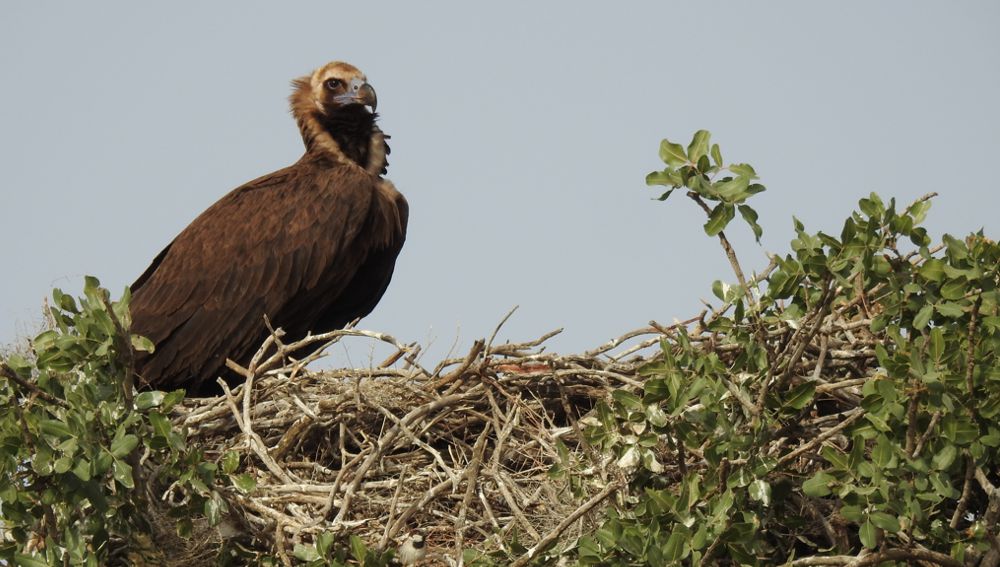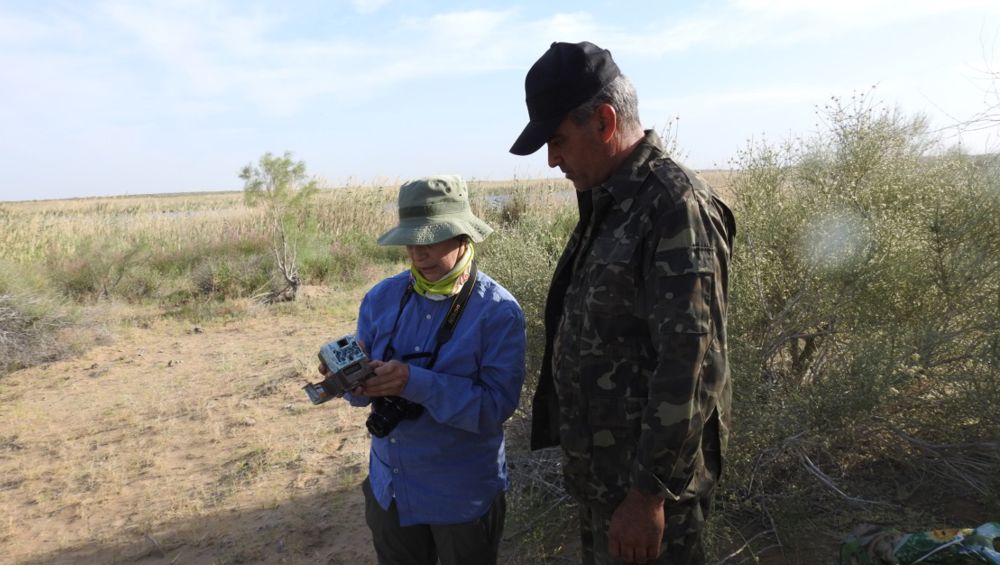ABOUT MEDICINAL FERULAS IN THE RED DATA BOOK
47In the period of the Revival of the New Era of the Powerful State, the activities carried out under the wise leadership of the President of Turkmenistan Hero Serdar Berdimuhamedov in the field of environmental protection, increase and careful use of its resources, ensuring environmental safety are of current importance. In the successful implementation of environmental policy in the country, an important role is given to the preservation and increase of the biological diversity of the plants growing on the Turkmen land. This activity is of great importance in protecting the environment and ensuring the effective and harmonious integration of our state into the world ecological space. The Esteemed President Serdar Berdimuhamedov emphasizes that “the main goal of the state environmental policy in our country is to ensure the life of the Turkmen people in the clean environment, as well as the rational use of our natural resources, enrichment of our flora and fauna, preservation of the amazing nature of our country and its transfer to future generations in an even more beautiful form”, inspiring workers in the environmental protection system, and opening up opportunities for new achievements in this area.
It is well known that the Turkmen nature has generously gifted us with everything necessary for life, including medicinal plants with particularly valuable properties. It is important to note that in the nature of Turkmenistan there are such endemic medicinal plants that are not found anywhere else.
With the publication of the multi-volume scientific encyclopedic work of the National Leader of the Turkmen people, Chairman of the Halk Maslakhaty of Turkmenistan Gurbanguly Berdimuhamedov "Medicinal Plants of Turkmenistan", a wide path has opened to the comprehensive and reliable study of medicinal plants used in folk medicine. This book by our Hero Arkadag serves as a manual for scientists, students, pupils and other people interested in plants.
National environmental legislation contains the norms enshrined in Article 53 of the Constitution of Turkmenistan aimed at protecting and rationally using all natural resources and the environment. The provisions of Article 53 of the Constitution of Turkmenistan: "Everyone has the right to a favourable environment for life and health, reliable information about its condition and compensation for damage caused to health and property as a result of violation of environmental legislation or natural disasters. The state controls the rational use of natural resources in order to protect and ensure healthy living conditions for the population, protect and maintain a stable state of the environment. Every person is obliged to protect nature, take care of the environment and natural resources" are clearly reflected in the content of all legal acts of legislation in the field of ecology. This environmental principle is specified in special legislation and is ensured by legal mechanisms for their practical implementation.
Today, our botanists, biologists and other scientists, working in this field, conduct scientific research to increase the species of the previously used medicinal plants and expand the scope of their application, which helps to strengthen human health. This is due to the fact that, despite the identification of the healing properties of many medicinal plants in scientific medicine, much work remains to be done on the comprehensive study of insufficiently studied or newly discovered species. It would be appropriate here to mention the fourth edition of the Red Data Book of Turkmenistan prepared by our scientists, published in 2024. It is important to emphasize that the three previous editions of this book (1985; 1999; 2011) were prepared taking into account plant species that require strict protection and their further study.
In his Letter of Congratulations sent on June 5, 2024 to the employees of the environment protection sphere of Turkmenistan and the people of the country on the occasion of World Environment Day, our Esteemed President noted the following: "Careful attitude to nature is the sacred duty of everyone, care for nature concerns all people. Every citizen of Turkmenistan must protect natural resources like the apple of his eye. It is necessary to take appropriate measures to protect wild animals and vegetation in nature reserves, increase their numbers, carefully preserve places with beautiful nature, and conduct in-depth scientific research. The Red Data Book of Turkmenistan is of great importance in preserving the unique gene pool of flora and fauna of the Motherland ‒ a source of scientific research on biodiversity. I firmly believe that work on reliable protection and reproduction of species included in the Red Data Book will contribute to the conservation of biodiversity not only in our country and region, but also on the planet as a whole".
As an example of the above, we can note the ferula, known in our country under the name "chomuch" (Ferula L.). This plant is distinguished by its exceptional healing properties and is used to increase the body's immunity to infectious agents and, mainly, to treat gastrointestinal diseases and a number of other diseases. The book "The Guide to Plants of Turkmenistan" (V.V. Nikitin, A.M. Geldikhanov, 1988) contains information about 20 species of ferula known to science. To date, three species of ferula in need of protection have been included in the fourth edition of the Red Data Book from the desert species.
Ferula karakumica (Geld. et A.V.Pavlenko, 2019) is a perennial monocarpic naked herbaceous plant of 20–40 cm height, its economic properties have not been studied. Reproduction is by seed. It flowers and bears fruit in May–June. It is widespread in the Central Garagum Desert (Gamyshly, the valley of the Middle Uzboy, the southern outskirts of the Turkmen Lake, the southern edge of the Uchtagan sands). The habitat of the Ferula karakumica is the slopes of sandy ridges. It is protected in the Bereketli Garagum State Nature Reserve.
Ferula foetida ((Bunge) Regel, 1878) is a perennial monocarpic herbaceous, valuable medicinal, fodder and ornamental plant of 100–120 cm height. It blooms in March–May and bears fruit in May–June. It is widespread in Ustyurt; Zaunguz (Damly, Sarygamysh), Northwestern (Uchtagan, Chilmametgum, Gumsebshen, Cholungyr), Central (Bovrudeshik, Akmolla, Minara) and Southeastern (Garabekevul) Garagum; Batkhyz; Koytendag. The habitat of the Ferula foetida is fixed sands and kyrs. It is protected in the Bereketli Garagum and Gaplangyr State Nature Reserves.
Ferula tadshikorum (Pimenov, 1979) is a perennial monocarpic herbaceous plant, valuable medicinal, fodder, essential oil and decorative plant of 80–120 cm height. It blooms in April–May and bears fruit in May–June. It is widespread in Koytendag (Meydan, Garabelent, Hojagaravul, Hojeypil, the outskirts of the Koyten village). The habitat of the Ferula tadshikorum is in the middle mountain belt, on fine-earth and fine-earth-rocky slopes, on outcrops of variegated rocks, along dry river valleys. It is protected in the Koytendag State Nature Reserve.
Another type of ferula, or in other words, its twenty-second species, found in the nature of our country, is the Ferula хylorhachis Rech.f., which is currently being studied by local scientists. It is assumed that after compiling its bioecological data, it can be included in the next edition of the Red Data Book.
The fact that ferula is able to successfully grow on the hot sands of the Garagum Desert, and also absorb air under the sultry sun rays, characterizes its use as a reliable remedy in the treatment of many diseases. Its composition is rich in vitamins and substances useful for the body. Among other plants that enhance human immunity, the medieval scientist-doctor of the East Abu Ali ibn Sina describes in detail the medicinal properties of ferula in his book "The Canon of Medicine". In this regard, it will be appropriate to note that in the multi-volume scientific encyclopedic work of the Esteemed Hero-Arkadag Gurbanguly Berdimuhamedov "Medicinal Plants of Turkmenistan", extensive information is given on the species of ferula used in folk medicine.
The roots, stems and fruits of ferula are widely used in the Turkmen folk medicine. It has valuable properties used in the curing diseases of the respiratory and digestive organs, flu, removal of sputum from the body, prevention of colds, in the fight against viruses and bacteria, in the prevention of malignant tumor diseases, as well as the treatment of gastrointestinal diseases.
According to scientists, there are more than 200 species of ferula in the world, 22 ones of which grow in Turkmenistan. Therefore, the scientists have a lot of work to do to fully study these plants, to identify their medicinal properties.
Our ancestors said about ferula: "Ferula of the sands is a medicine", which indicates that people with various ailments found healing with the help of this plant. In our country, various species of ferulas are found in the Western Garagum Desert, Ustyurt, within Turkmenbashi etrap of Balkan velayat, Tagtabazar etrap of Mary velayat, in the desert ecosystems of the coastal areas of the Amudarya and Garagum Rivers, and in other areas. Ferulas growing in different areas differ in taste and composition, but are not inferior to each other in properties.
Ferula, although a perennial plant, bears fruit once (monocarpic). In the 7‒8th year of life, a flowering stem appears in the middle of its rosette of leaves, on which fruits with wings are formed. Ferula growing on sandy soil has a sweeter taste compared to a plant growing on the clay soil. Since the upper part of the ferula has a more bitter taste than the lower one, when collecting fruits for consumption, its two upper layers are cut off and thrown away.
Thanks to the efforts of the Esteemed President, who puts human health first, broad opportunities are created for preserving and enriching the unique, inimitable nature of our country, thoroughly studying natural resources on the scientific basis and ensuring environmental well-being, including conducting comprehensive research in the field of plants used in folk medicine. A detailed study of the natural composition of the medicinal plants allows us to recommend them as remedies for diseases caused by a deficiency of certain elements in the body, to develop and produce new medicinal products from plants, including ferula.
It is extremely important for scientists, teachers and all of us to actively participate in the implementation of the environmental policy carried out in our country in environment protection, enrichment of the plant kingdom, rational use of natural resources, preservation of flora biodiversity for future generations.
Gulnabat Jumamyradova,
National Institute of Deserts, Flora and Fauna of the
Ministry of Environment Protection of Turkmenistan
Mahym Nazarova,
Ashgabat City "Beyik Serdar Nesilleri"
Secondary Specialized School 75
with In-Depth Study of Natural Sciences







